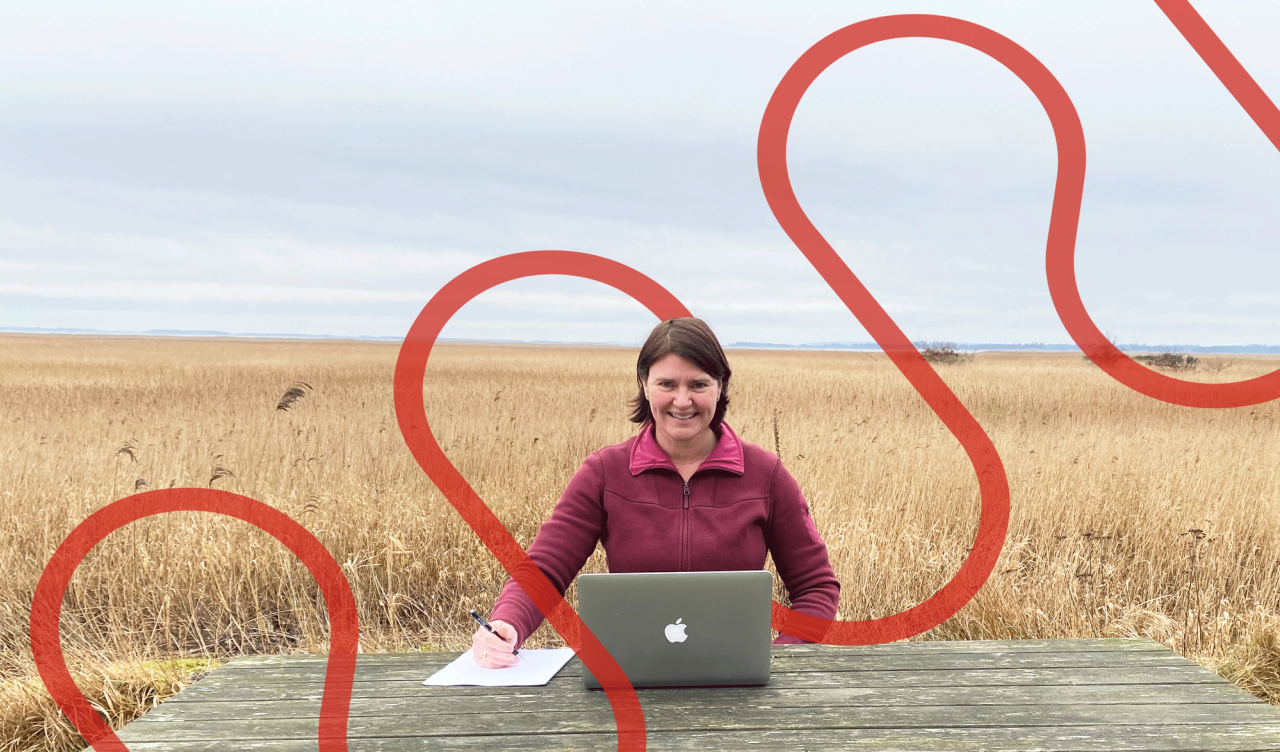Professional business coaching has the ability to unlock potential and transform companies through new employee skills and perspectives but how does it happen? What does a coaching journey look like and what is involved? What makes a coaching journey productive?
Knowing what to expect and what is required to ensure a rich coaching experience helps ambitious companies and professionals with their coaching decisions. Having coached professionals for more than two decades, I am delighted to share my experience of what makes a productive coaching journey.
The Coaching Journey
Given the origins of the word ‘coach' in transportation, and the continued applications, the metaphor of a journey intuitively explains the process clients go through with coaching. As described by Clarissa Corneliussen in her excellent article on “What is business coaching”:
“The metaphor of a journey reflects the nature of the process of coaching, where the coach helps the client navigate how s/he best, most fruitful, and rewarding, travels in (business) life.”
Professional coaching covers a vast array of unique approaches, frameworks, and suggestions. Each one mirrors the theoretical standpoint of the coach, as well as, their intention with the coaching process itself. While the process might use different methods, the path and result aim to enlighten, empower and enhance the prospects and perspectives of clients and their organizations.
What is the typical Coaching Journey?
1. Finding the right coach
The first step is to find the right coaches for your employees. If needed, you can read much more about this delicate process in our article entitled “What to look for when looking for a coach”.
Perhaps, you are among the lucky few whose company has a list of vetted professional business coaches to turn to. Maybe, they even have someone employed internally, who can coach you. In our experience, it helps to be aware of the pros and cons of choosing an internal vs an external coach. We discuss the differences and merits to both in our article “Hire a coach - or keep it In-House?”
No matter who the coach is, trust and respect are paramount for the coaching journey to be fruitful. These are built when both parties are willing to be open and honest with each other through clear communication.
For clients to believe in the process, they must know their coach is qualified to help them reach their goals. Therefore, the chosen coach should not just be qualified on paper, but also have what it takes to help professionals navigate modern work life.
Each coach should have relevant education, strong business acumen, and rigorous experience working with clients in an organizational setting. They should have at least five years of professional business coaching experience (Session standards) backed by great references from previous clients. A coach is expected to show up with presence, to act with integrity and confidentiality.
Finding a coach with credible certification and experience provides the foundations of trust while acting with integrity, confidentiality, and presence fosters the psychological safety required for employees and leaders to lean into the coaching journey in the best possible way.
2. Setting Expectations
When you have found the right coach, the next step is to get on the same page. The coach and client need to align expectations.
At Session, the coach’s responsibility is to help the client discover, clarify, and align their career and business goals. Their job is to encourage self-discovery, bring client strengths into play, and leverage their knowledge and experience to support the achievement of goals, including the goals of the organization. This is enhanced by providing clarity on the roles of the coach and client.
Through the clarification process, it needs to be transparent to the client that in order for them to get the most out of the coaching journey, they need to commit to communicating honestly. They need to stay open to feedback and assistance. They will need to create the time and energy to participate fully in the process. It also ought to be clear that it is the client’s responsibility to acknowledge and address issues discussed in sessions.
It should also be clear, before the coaching journey starts, that coaching is not therapy. Coaching does not involve the treatment of mental illnesses and should not be used to substitute therapy, mental health care, or substance abuse treatment. If a client encounters mental health troubles, they should seek professional help from a healthcare facility.
The above should be made clear from the very beginning for all parties. Sometimes coaches will ask clients to sign a document acknowledging their responsibilities in terms of getting the most out of their coaching. This is standard practice at Session. We find it concentrates each stakeholder on what matters: building a great relationship where both the client and the coach can commit themselves fully to the process.
3. Build trust and get started
Once expectations and roles are aligned, the sessions can begin. In this stage of the journey, the coach and the client meet for the first time and establish a professional relationship. When establishing the coaching relationship, the coach and client will build rapport which is founded on a connection underscored by trust, respect, chemistry, and understanding.
In the first session, the following aspects are discussed:
- Confidentiality, hopes, dreams, and expectations for the coaching journey. What is expected of the coach? How can s/he become the best coach for the employee? Does the client have any prior experiences with coaching? What did that lead to?
- Goals. What is the client aiming for with the coaching? What would they like to change, develop, strengthen? Are there any external expectations, from managers for example, on what the employee needs to develop, or bring into play? What is required for the employee to become (even more) successful, and to help the company achieve its strategic goals?
- The Coaching Journey ahead. How often should sessions occur? How long does the coach anticipate the journey will last? What does the coach expect from the client? What does the client need to do, try, train or read between sessions?
4. Assess & Acknowledge the Starting Point
At the beginning of the coaching journey, the client will give self-assessments about strengths, weaknesses, values, passions, dreams, and the situation here and now, (as perceived by the client). They provide an overview of experiences they have had throughout their lives. This helps to give the coach an idea of what works and how experiences are mastered, perceived, and managed.
Self-assessments and the overview allow the coach to assess how and when to challenge, give advice (or not) and what kinds of questions to ask, etc.
Feedback from external sources can be gathered either from reports like 360´ies or from interviewing managers, peers, colleagues, and others. This offers a broader picture of the strengths, weaknesses, challenges, opportunities, and the here-and-now situations of the client. What are others saying? What do they think the person should change and develop? Gathering other opinions helps to give the client a direct avenue to success within their companies, as well as better self-awareness.
The assessments will give the coach and client a clear “starting point” of the journey. What are the challenges and ambitions? What is the here-and-now situation? What strengths can we build on? What weaknesses need to be overcome? What needs to be changed? How can the client achieve their ultimate goals?
5. The Coaching Journey Unfolds
Throughout the coaching journey, gaps between the starting point and the client’s goals and dreams are assessed, worked on, and narrowed.
A LOT of questions are asked. Some advice will be given, when appropriate, but be aware that coaching is coaching - not consulting or mentoring. The difference between these interventions/methodologies is further explored in the article “What is professional business coaching?”.
Through the coaching, the employee will get help and is encouraged to bring their strengths into play. They are asked to reflect deeper on subjects that are challenging, and to imagine “the next new”.
Underlying thought patterns will be challenged, and new perspectives and other ways of looking at a situation are brought in. Employees will be asked to read or watch relevant material, like articles or TED talks in between sessions. They will talk about their values and how to act and live in accordance with their personal and organizational principles.
Things are tried out and role-played when needed. Employees will be introduced to tools that might benefit them in their day-to-day professional life. New behavior will be trained, and they will be encouraged to experiment and try new things. They will build new habits, constructive thought patterns, and resilience.
6. Revisit and re-evaluate expectations and goals - regularly
It is common to evaluate the coaching journey around the 3-month mark in any journey. There, employees revisit and evaluate progress in light of the goals set in the beginning.
Employees will assess whether they are on the right track, or if something else is needed. They will celebrate milestones reached, align expectations and talk about their relationship with the coach. Is the employee getting the help they need? Is there something else needed from the coach? The coach will also provide feedback on how they feel about the client’s engagement, commitment, and progress.
The journey is evaluated, summed up, and, typically, continued. New goals are set, and the employee and coach agree on the next steps.
7. End the journey - or Check in for Life
Coaching journeys can end after a successful few months, and some can last a lifetime.
When journeys end after just a few months, it can often be because the client has achieved their goals and aims. However, sometimes the journey ends because the timing wasn't right. Perhaps, the client is not in a position to dedicate the time and energy needed for the process. In other instances, the journey ends because the match, fit or chemistry between the coach and client wasn't there.
The majority of coaching journeys last between six months and a year. This gives the client enough time to forge new habits and to be prepared for new career prospects while also measuring the success of the changes made.
Many journeys continue past the year mark, though, because continuous coaching keeps us sharp, structured and is reflected in our daily management and interactions with colleagues. It is a bit like exercising. We all know it's good for us, but it can be hard to get into the right rhythm. A coach or a personal trainer keeps us on track in our development and gives us the confidence to employ our strengths.
Professional business coaches help us proactively take action. Getting their help can be just what employees need to stay committed and focused on developing and upskilling. Once they have built the right habits, mastered the tools, and found their own way of doing things and solving problems, the coach’s job is to get out of the way, so the client can continue on your own.
The inevitable aim of a coach is actually to make themselves redundant. But occasionally, a continuation is requested. Where this is preferred by the client, it should be assessed rather than automatically granted. Often the coach and client will simply assess, make small changes and recommit to the journey.
However, the assessment is necessary. Is the request down to the client’s unresolved issues with ending relationships, saying goodbye, or doubt in their ability to deal with issues on their own? This should not be the reason for a continued journey. Rather, it should be worked through and dealt with for the client to progress with confidence and independence.
The Coaching Journey of a Lifetime
In some circumstances, coaches and clients can create a lasting, lifetime coaching bond.
In those instances, the coach becomes a trusted advisor which the employee confides in when things get rough, or a fresh perspective is needed. This does not mean that the individual is “lost” or “dependent” on the coach. But having that sounding board, someone who knows the pitfalls and strengths of the client, and who can encourage, help, and advise in a direct and professional manner, could be a key asset for the rest of the career.
This does not mean that the coach and client have to meet often or even regularly.
Some of my clients, whom I started coaching 20 years ago, I only see every once in a while. Sometimes years pass by, where we do not have any contact but then something happens, and the client reaches out. They might ask for 1,2, perhaps 3 sessions, and then years can pass again. With others, we have agreed to have a check-in session every year, and for others, it is every quarter.
Strong, lasting coaching bonds depend on the circumstances. This is why it is important that the coaching journey is individualized and tailored to each unique client. We all have different needs, thus, one-size-does-not-fit all!
Summing up
Each coaching journey plots its own course. It is based on the needs and aspirations of each new client and the organizations they work for.
I hope I have given a clear window into what a coaching journey entails. While journeys are forever changing, these are the pillars to expect in a coaching journey with Session. We employ the best business coaches who submit to a rigorous vetting process that assesses competencies, experience and qualifications. Then we match leaders and employees with the specific business coaches that we believe can best help each individual excel.
Should you choose to either embark on the journey yourself or offer this opportunity to your leaders and employees, you will hopefully now have a better idea of what to look out for, what to expect, and what professional business coaching can offer.
If you are ready to take the next step, do not hesitate to reach out, and we will make sure to match you with an excellent, professional coach!













